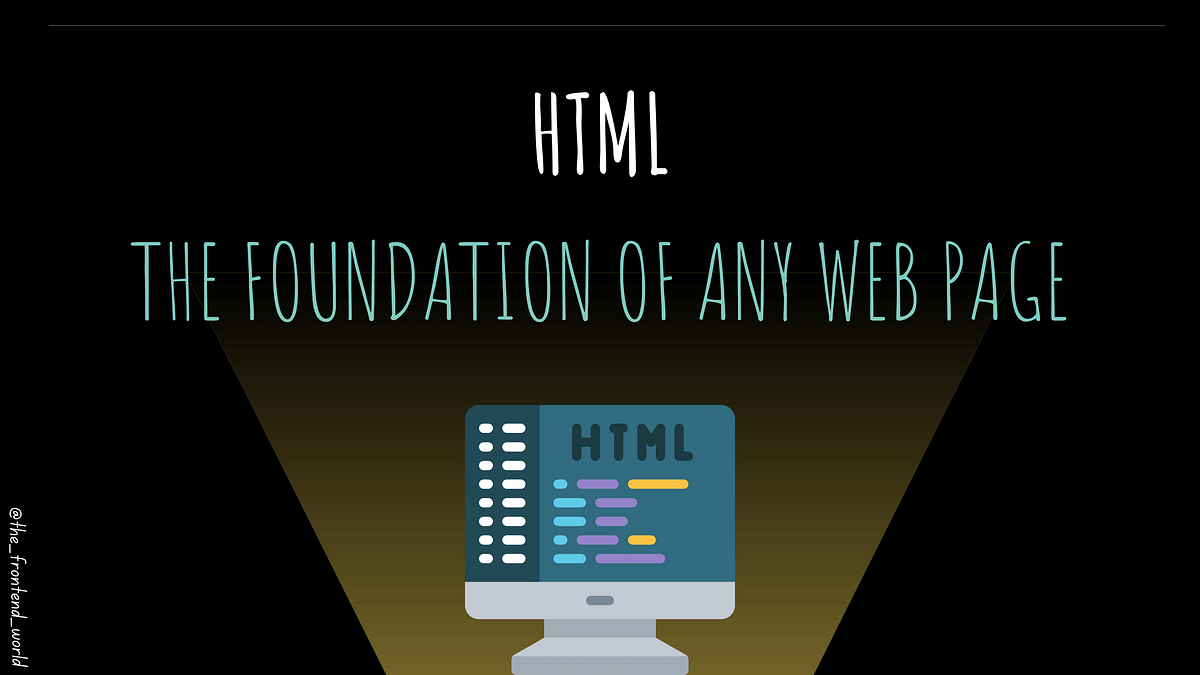HTML Basics: Building the Foundation of the Web
 Surya Durgesh
Surya Durgesh
HTML (HyperText Markup Language) is the backbone of every web page you see online. It structures content and tells the browser how to display text, images, and other elements. Whether you're a beginner or brushing up on your skills, understanding HTML's basics is essential to start building websites.
Introduction to HTML
HTML is a markup language that uses "tags" to define elements on a page. These tags tell browsers how to interpret and display content. For example, a paragraph, a heading, or a link all have specific HTML tags that define how they should appear on a web page.
Why is HTML Important?
Foundational Language: All websites use HTML for content structure.
Ease of Learning: HTML is relatively simple to learn, with tags that directly relate to the content they define.
Essential for Web Development: Whether working with front-end or back-end, understanding HTML is crucial.
What Are HTML Tags and Elements?
An HTML tag is a keyword enclosed within angle brackets (<>). These tags come in pairs: an opening tag (<tag>) and a closing tag (</tag>), with the content in between forming an element.
For example, a paragraph element is represented as:
<p>This is a paragraph of text.</p>
Tag:
<p>Element:
<p>This is a paragraph of text.</p>
Self-Closing Tags: Some tags don't have closing counterparts, such as the image tag:
<img src="image.jpg" alt="description">
How to Create a Basic HTML Structure
Every HTML document follows a specific structure. This helps browsers understand what to render and how to do so. Below is a simple HTML template:
<!DOCTYPE html>
<html lang="en">
<head>
<meta charset="UTF-8">
<meta name="viewport" content="width=device-width, initial-scale=1.0">
<title>My First Web Page</title>
</head>
<body>
<h1>Welcome to My Web Page</h1>
<p>This is a simple paragraph to demonstrate HTML structure.</p>
</body>
</html>
Breakdown:
<!DOCTYPE html>: Declares the document as an HTML5 document.<html>: Root element that wraps all the content.<head>: Contains meta-information like title and encoding.<title>: Displays the webpage title in the browser tab.<body>: Contains the visible content, such as text, images, and links.
Creating Headers, Paragraphs, and Links
1. Headers:
HTML provides six levels of headers, from <h1> to <h6>, where <h1> is the most important and <h6> is the least.
<h1>This is a Heading 1</h1>
<h2>This is a Heading 2</h2>
<h3>This is a Heading 3</h3>
2. Paragraphs:
Paragraphs in HTML are created using the <p> tag, and they automatically include spacing before and after.
<p>This is a paragraph of text in HTML.</p>
3. Links:
You can create links using the <a> tag. The href attribute specifies the destination URL.
<a href="https://www.example.com">Click here to visit Example.com</a>
Practical Examples and Exercises
Let's create a simple webpage that combines these elements:
<!DOCTYPE html>
<html lang="en">
<head>
<meta charset="UTF-8">
<meta name="viewport" content="width=device-width, initial-scale=1.0">
<title>HTML Basics Demo</title>
</head>
<body>
<h1>HTML Basics</h1>
<h2>Understanding Tags and Elements</h2>
<p>HTML is the structure of a webpage. Tags define elements, which browsers interpret and display.</p>
<h2>Creating a Link</h2>
<p>Want to learn more? Visit <a href="https://www.w3schools.com/html/">this tutorial</a>.</p>
<h2>Practice Exercise</h2>
<p>Try creating your own HTML file with a heading, paragraph, and link.</p>
</body>
</html>
Exercise:
Create an HTML file named
index.html.Write the HTML code provided above.
Open it in your browser and see the result.
Conclusion
HTML is the foundation of web development, and mastering its basics sets you on the path to building fully functional websites. From structuring content with headers and paragraphs to linking pages, HTML plays an essential role in how the web works.
In the next blog, we'll dive deeper into styling your HTML using CSS to make your web pages visually appealing. Stay tuned!
By following these steps and practicing with simple HTML code, you'll build a solid foundation in web development. Happy coding!
Subscribe to my newsletter
Read articles from Surya Durgesh directly inside your inbox. Subscribe to the newsletter, and don't miss out.
Written by

Surya Durgesh
Surya Durgesh
I'm always excited about the possibilities of learning and always open to new ideas